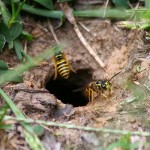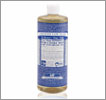Fleas and ticks (and mosquitos) can bring severe itching, allergic reactions, discomfort, and even serious diseases (such as lyme disease) to your pets, so it’s important to protect your pets from them. However, studies have found that some common flea and tick control treatments—products that are readily available at stores and have been recommended by many vets—aren’t just harmful to fleas and ticks; they can actually poison pets, and some are also dangerous to humans and other animals.
 Some conventional flea and tick treatments (including many of the topical, spot-on treatments that are applied directly onto pets’ skin, as well as flea collars, powders, and sprays, and even some ingestible products) contain highly toxic pesticides, some of which have been shown to cause a range of serious reactions in pets, from skin problems, vomiting, and excessive drooling to neurological problems (e.g., seizures or uncontrollable shaking), heart attacks, and death. So, tragically, some pesticides end up serving as pet-icides…
Some conventional flea and tick treatments (including many of the topical, spot-on treatments that are applied directly onto pets’ skin, as well as flea collars, powders, and sprays, and even some ingestible products) contain highly toxic pesticides, some of which have been shown to cause a range of serious reactions in pets, from skin problems, vomiting, and excessive drooling to neurological problems (e.g., seizures or uncontrollable shaking), heart attacks, and death. So, tragically, some pesticides end up serving as pet-icides…
The Center for Public Integrity did a study in 2008, and found that at least 1,600 pet deaths related to spot-on treatments were reported to the EPA over the previous five years. According to the NRDC, cats may be more susceptible to adverse reactions than dogs, since they are more likely to lick the treatments off of their fur and they often lack enzymes for metabolizing or detoxifying the pesticides. Many of these pesticides are toxic to humans, as well, and children are especially vulnerable to exposure.
Avoid products that contain pyrethroid, pyrethrin, or permethrin pesticides, organophosphate insecticides (such as tetrachlorvinphos/TCVP; chlorpyrifos, dichlorvos, phosmet, naled, diazinon, and malathion), carbamates (e.g., propoxur, fenoxycarb, and carbaryl), or Amitraz. [This list was updated on May 26, 2010.] Many common flea/tick control products contain at least one of these ingredients. (Towards the end of this post, you will find a link to a listing of some specific products to avoid.) Please note: Never use products on cats that are meant for use on dogs (and vice versa), and never give your pet more than the recommended dose.
It’s disturbing that so many of us might have been unwittingly sickening our animals (and possibly shortening their lives) by using these products, often at the recommendation of our veterinarians, who trusted the manufacturers’ assurances of the products’ safety. It’s yet another example of how you can’t trust that a product is safe just because it’s been allowed into the marketplace. According to the Humane Society, the EPA did not start reviewing pet products for safety until 1996, and there is still a backlog of products that need to be tested. However, the overarching problem is that some ingredients that the EPA had deemed “safe” clearly were not. In 2009, the EPA announced that it would be developing stricter testing and evaluation requirements and could place new restrictions on flea and tick products.
Fortunately, there’s no need to wait for those changes to take effect. Safe and natural alternative products and methods for controlling fleas and ticks already exist. Here is some guidance from the NRDC on ways to prevent flea problems. And when treatments are necessary, some pet supply stores and many online sites (see links below) now carry flea and tick products that are made up of plant-based ingredients, such as peppermint oil, citrus oil, clove oil, or Neem, which is a natural insecticide that comes from a tree. See the NRDC’s Flea and Tick Product Directory to look up the ingredients and risks of specific products. Some flea and tick solutions can even be made at home. Fleas and ticks are repelled by rosemary, thyme, eucalyptus, and lavender. So to ward off the bugs, you can tuck sprigs of one or more of those plants under your pet’s bed cover (or under your rugs), or boil some of those herbs in water and pour the cooled water onto your pet, rubbing it into their coat. (Note: Some herbal or “natural” ingredients can cause allergic reactions or toxicity in animals. Be sure to test any treatment in a small dose first; and always apply treatments sparingly and only as needed. Also, never use pet products that contain pennyroyal oil, which is toxic to animals. Furthermore, while some sources say that adding a little bit of garlic to a pet’s diet will repel fleas, other reputable sources say that garlic can be toxic to dogs and even more so to cats, even in small amounts; so I steer clear of using garlic, just to be safe.) If your pet has a flea infestation that does not respond to any of the plant-based solutions listed above, look for the lowest-risk commercial products listed in the NRDC’s directory, which include Spinosad-based products, such as Comfortis.
NRDC’s research has identified many common products that should be avoided, due to their high toxicity risks. According to the NRDC, such high-risk products currently include K9 Advantix II, and a number of products made by Hartz, Sentry, Sergeant, Vet-Kem, Adams, Bio Spot, Happy Jack, Verbac, Zodiac, and other companies.
To take action on this issue, print out some of the info from the links below, bring it to your pet store and to your veterinarian, and ask them to stop selling flea control products that contain the most dangerous pesticides (and to start selling the lowest-risk products), to protect the health of pets and their people.
Resources for More Information:
- NRDC GreenPaws website (a searchable product directory)
- Center for Public Integrity study: Perils of the New Pesticides
- Humane Society article on Flea and Tick Product Ingredients
- NRDC report: Poisons on Pets: Health Hazards from Flea and Tick Products, 2000
The following are a few online stores that specialize in natural and non-toxic pet supplies. (Note: This list does not constitute an endorsement of any of these companies):
Related Post: Selecting Safe and Healthy Pet Foods; and Natural Mosquito Control

 I’m not someone who delights in killing pests, and I don’t often advocate for their demise. In fact, I usually do my best to avoid killing them (e.g., if an indoor spider gets too close for comfort, I usually capture it in a jar and release it outside). However, I recently had to make an exception to my pacifist policy, when I noticed that yellow jackets had built a ground nest right next to the front door of our house. It was an underground nest in a flower bed. There were so many yellow jackets coming and going from the nest throughout the day that we were scared to keep our front door open for very long, and I worried that our dog would inadvertently step on the entry to the nest and get swarmed and attacked. Furthermore, I learned that some yellow jackets raid honeybee hives to steal their honey, and they kill honeybees in the process. This was a sufficiently good reason to get rid of the ground-nest jackets, in my opinion. One of our neighbors has a honeybee hive, so it felt like getting rid of these yellow jackets was a just and neighborly thing to do. (Honeybees are suffering from a Colony Collapse Disorder. For info about it,
I’m not someone who delights in killing pests, and I don’t often advocate for their demise. In fact, I usually do my best to avoid killing them (e.g., if an indoor spider gets too close for comfort, I usually capture it in a jar and release it outside). However, I recently had to make an exception to my pacifist policy, when I noticed that yellow jackets had built a ground nest right next to the front door of our house. It was an underground nest in a flower bed. There were so many yellow jackets coming and going from the nest throughout the day that we were scared to keep our front door open for very long, and I worried that our dog would inadvertently step on the entry to the nest and get swarmed and attacked. Furthermore, I learned that some yellow jackets raid honeybee hives to steal their honey, and they kill honeybees in the process. This was a sufficiently good reason to get rid of the ground-nest jackets, in my opinion. One of our neighbors has a honeybee hive, so it felt like getting rid of these yellow jackets was a just and neighborly thing to do. (Honeybees are suffering from a Colony Collapse Disorder. For info about it, 